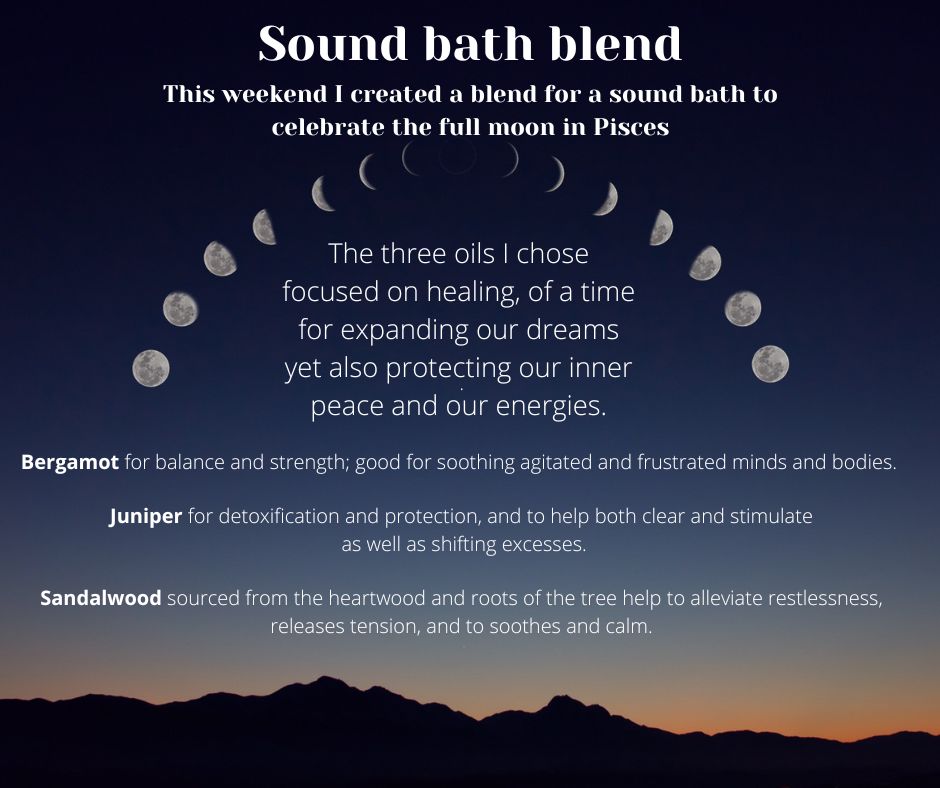
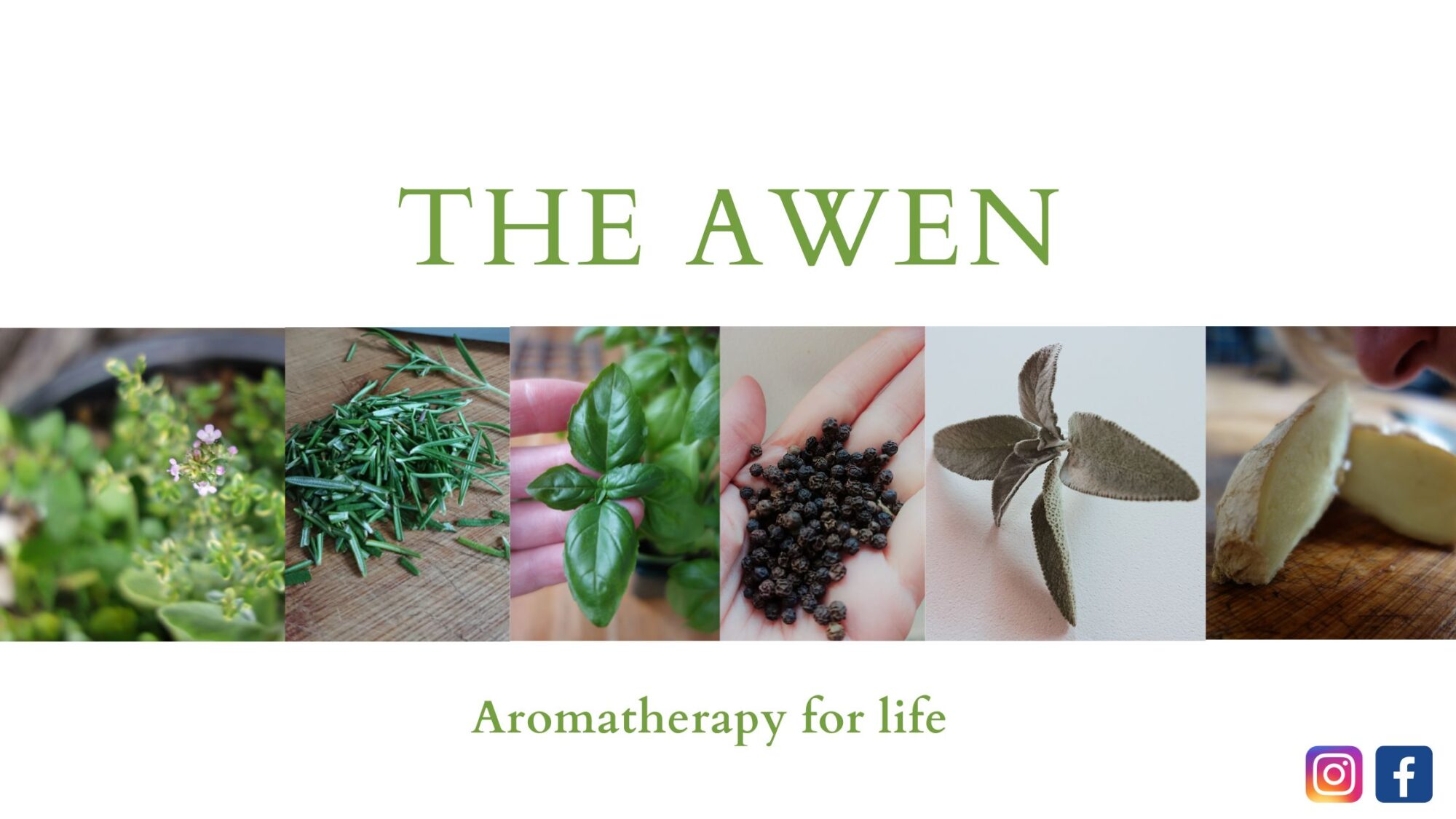
Blog about Aromatherapy oil, methods, practices and applications
Information about oils
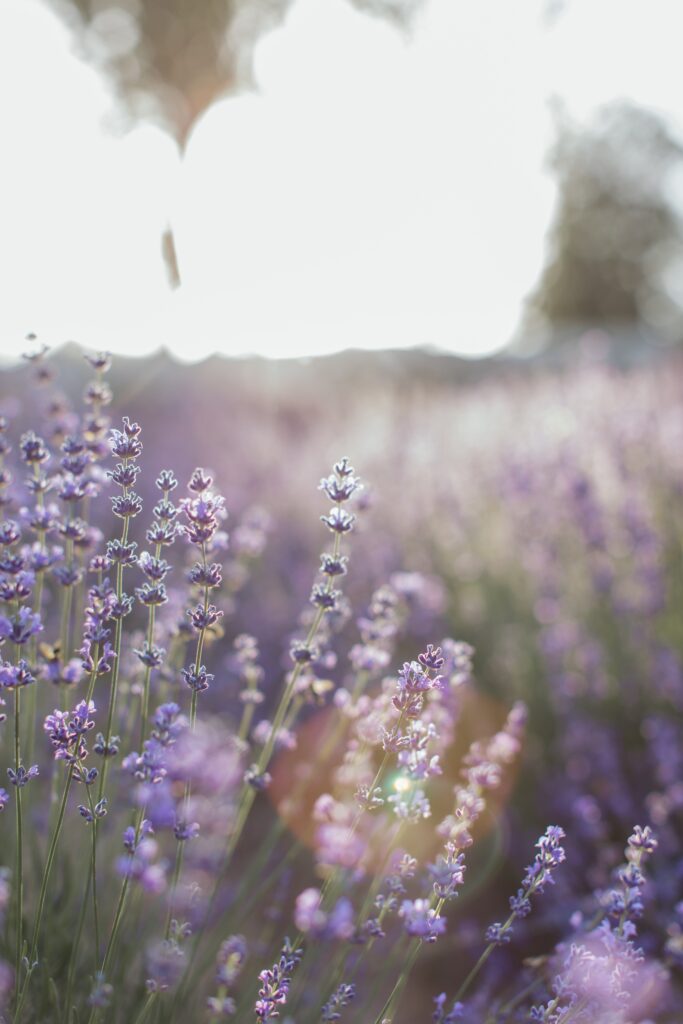
New research published last year has evaluated the effects of the aromatherapy, specifically lavender (Lavanduala Angustafolia) on stress and pain perception in children visiting the dentist.
According to the authors, the findings ‘showed that aromatherapy with lavender essential oil can significantly result in reduced pulse rate and salivary cortisol level in children during dental treatment. The results also found the effectiveness of lavender aromatherapy on the reduction of pain perception during dental injection; therefore, it could be considered as a method for stress and pain control in dental settings in children’ [sic]. (Ghaderi and Solhjou, 2020)
The study explored the effects of lavender essential oil on 24 children attending two dental appointments, one week apart. In the first appointment, lavender was added to a humidifier 30 minutes before treatment but not used in the second appointment.
The children’s anxiety levels, pulse rates, salivary cortisol levels and a face rating scale were measured at different stages of the appointments.
It was noted that the anxiolytic (anti-anxiety) effect of the lavender essential oil could be the result of ‘masking dentistry-related odours’ which children (and adults) can find distressing.
Even so, this is an interesting study and the authors comment that further research using “a non-therapeutic odour as the placebo is needed, in order to assess the therapeutic effect of lavender. ”
Read the article on the FHT blog here.
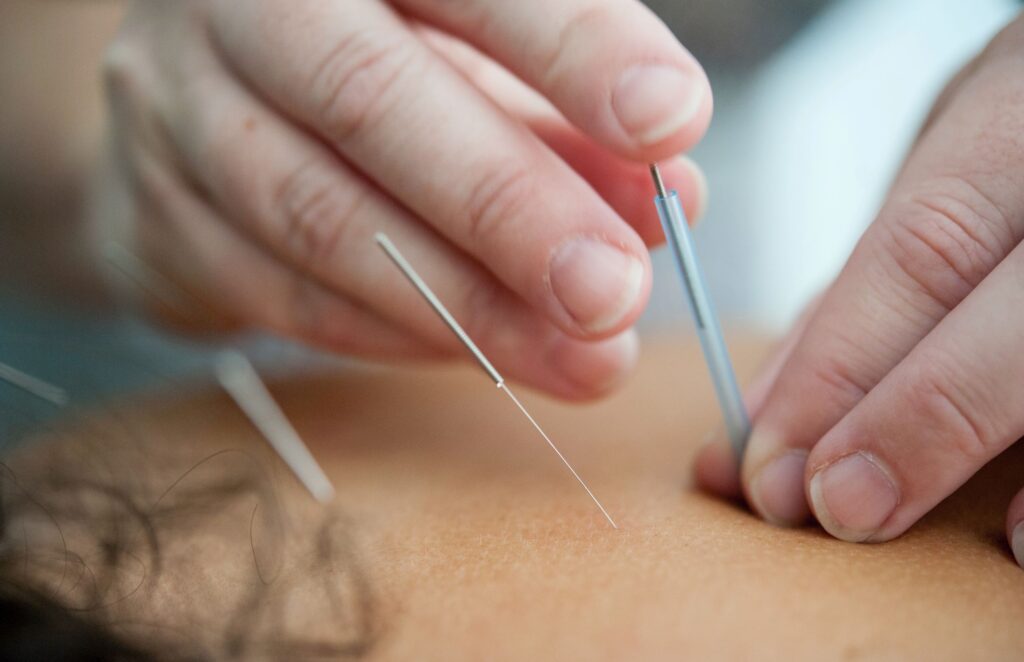
I teamed up with Helen McQue Acupuncture to write about how acupuncture and aromatherapy can help alleviate menstrual pain.
Helen is a gifted Acupuncturist with years of training who runs a busy clinic here in Richmond, North Yorkshire. In April I am hoping to be joining Helen’s practice to deliver aromatherapy to clients (all being well, Covid-fingers-crossed).
This is an exciting time as aromatherapy sits well within the principals of acupuncture and Traditional Chinese Medicine (TCM). Both acupuncture and aromatherapy are holistic therapies whereby we treat the body as a whole and each part of the body is integral to the whole. We see body systems as being connected – mind, body, spirit – as well as connected to nature, and how changes within nature are reflected in and on the body. This can be best understood right now during the winter months when we experience the cold and how this affects us both physically and mentally. Helen discusses this in her blog post in reference to keeping our kidney’s warm – a key feature of TCM.
Similarly, our practises focus on the power of self healing and prevention, and how maintaining balance in the body and mind can help prevent illnesses. TCM talks about this in terms of the yin-yang balance, and in aromatherapy we address balance by harnessing the healing power of chemicals within essential oils to help restore our balance. Helen discusses this in blog in relation to blood stasis and fluid within the body in understanding why and how we experience menstrual pain.
For my own part, I offer ideas for a blend of essential oils also focussing upon balance and warmth, offering different applications to help alleviate menstrual pain. My longer blog post about PMT symptoms and aromatherapy can be found here.
Click here to read the Helen’s blog post. Enjoy!
Any questions, do get in touch with myself or Helen. Helen’s clinic is open and appointments can be booked here or you can find/follow both me and Helen on Facebook, Instagram: @HelenMcQueAcupuncture @theawenaromatherapy for up to date information on acupuncture and aromatherapy. Helen is also on Pintrest.
If you do seek out Acupuncture or Aromatherapy, please make sure you do your homework and ensure that the therapist is trained, qualified and insured.
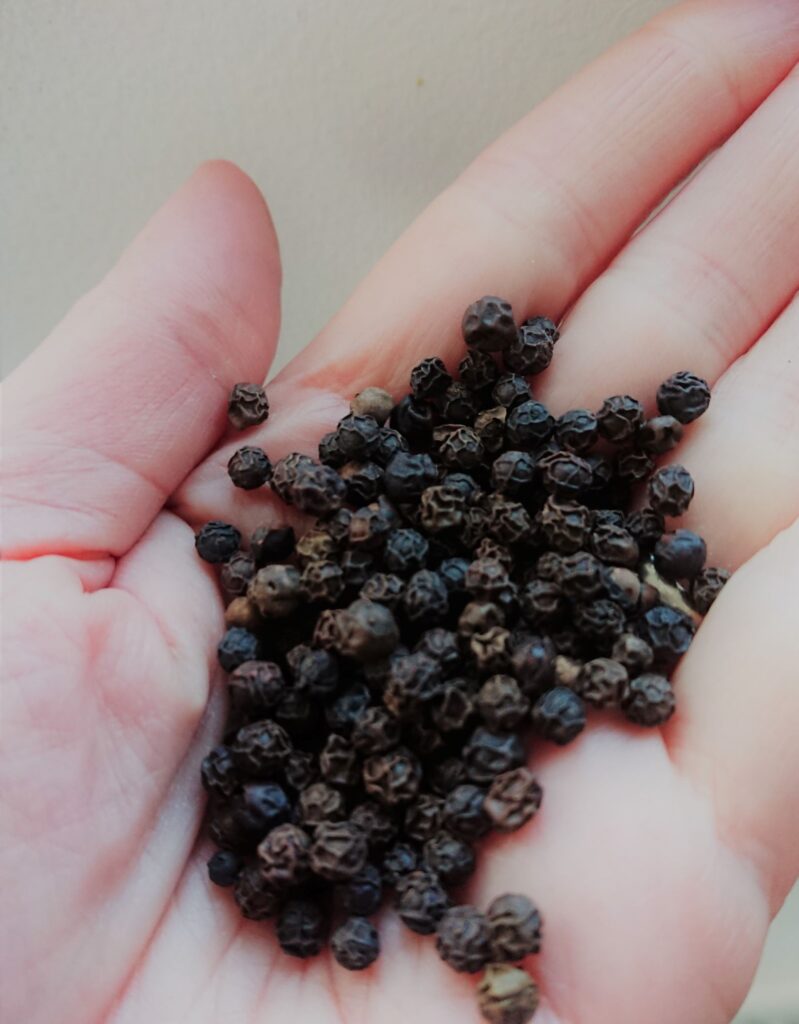
Black pepper (Piper nigrum) is distilled from the dried crushed fruit of the vine and has a sharp, clean, spicy aroma. If I were to sum up this oil in one word it would be stimulating.
It is an oil I turn to when treating muscular-skeletal aches and pains as it is warming, a tonic for tired muscles so good to use before and after sport. It is rubefacient; when applied it reddens the skin due to the dilation of the capillaries therefore excellent for stimulating circulation and the lymphatic system. It has been used for over 4000 years in India to treat urinary and liver disorders because of it’s detoxifying nature.
It can help stimulate digestion, improving one’s appetite and aiding those with constipation. A good decongestant it helps shift catarrh brought on from colds and coughs.
It blends beautifully with citrus oils such as Lemon (Citrus limon) or Orange (Citrus sinensis), or flower oils such as Geranium (Pelargonium graveolens), or a resin oil such as Frankincense (Boswellia sacra).
Due to it’s fiery nature I would avoid using it with the elderly and children, and has the potential to irritate the kidneys and sensitive skin. Avoid in pregnancy and if taking homeopathic remedies.
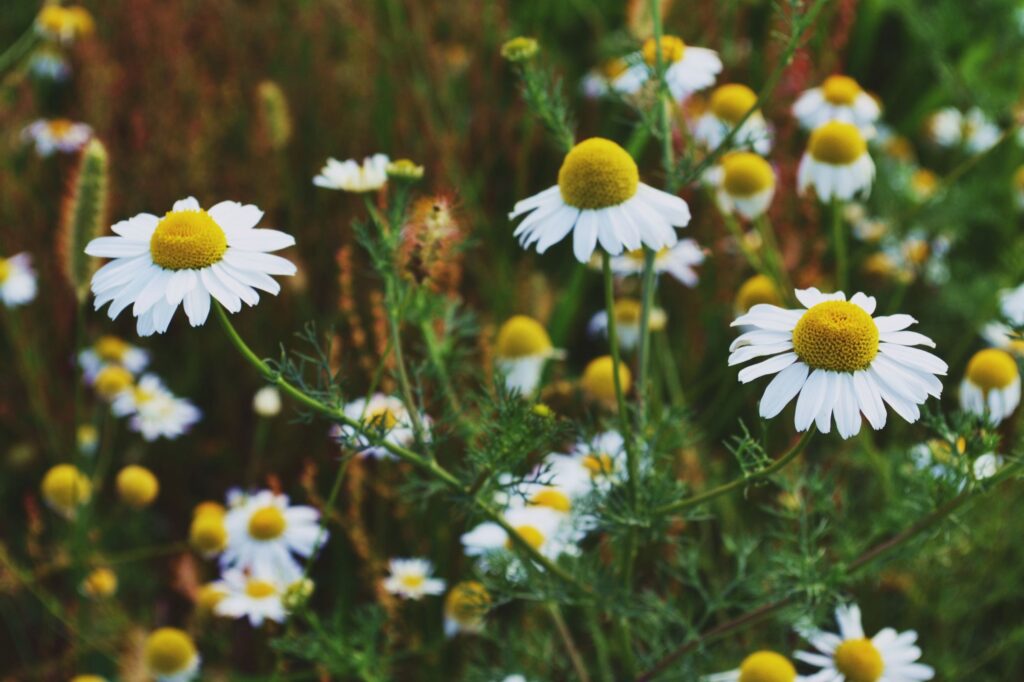
If I was going to sum up Roman Chamomile (Chamaemelum nobile) in one word it would be soothing.
Distilled from the flowers it is readily available as an essential oil, and can also make a lovely tea which could easily become part of your everyday self care routine.
As an oil it has an earthy, fruity, refreshing aroma with a hint of apple.
A highly respected oil, it is gentle and safe – its main constituent being Esters therefore it is gentle and safe making it good for treating the young, elderly and frail. Its soothing anti-inflammatory properties help those with allergies such as hay-fever, eczema and asthma. It’s calming nature is good for when we feel stressed, over-whelmed with worry or anger. It is a potent sedative so great for those who need rest. And it’s comforting properties can soothe premenstrual tension and painful periods as well as digestive issues such as indigestion and cholic.
Applications include adding drops to a body or face oil (blends well with Lemon, Bergamot, Geranium, Lavender, Patchouli, Neroli), or a compress to use with a hot water bottle for a churning stomach or period pain (see blends and applications here).
Another great way is to make a tea by growing Chamomile in your garden which you can dry and add to a brew. You can also buy the dry herbs or tea bags.
Chamomile is emmenagogic so do not use in pregnancy.
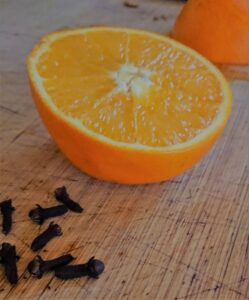
I’m getting into the festive season by putting Sweet orange (citrus sinensis) combined with Clove bud oil (syzygium aromaticum) into my oil burner. Add a drop of each to a teaspoon of water, light the candle and breathe.
You may have come across Clove bud oil if you’ve had toothache as it is high in eugenol, a chemical that numbs the nerves. It can also be found in food. If using Clove bud oil in a massage, do not combine with other oils high in eugenol such as Holy Basil (Ocimum tenuiflorum) and Cinnamon (leaf and bark) as these oils should always be used in small amounts due to their chemical make up. Also, I would never recommend ingesting any essential oil, consult a qualified aromatherapist or your doctor before use.
Yet Clove bud oil is highly effective and although recommended to be used with caution, there is research about how successful it is for dealing with pain and bacteria. It is anti inflammatory and an analgesic, good for musculoskeletal pain such as arthritis. It is an immunostimulant so can be used after a period of illness, or you are feeling physically debilitated.
It is a relaxing, warm oil and can create a peaceful atmosphere with it’s rich, spicy but sweet aroma, and hints of woody, fruity notes which is why I’m recommending it in a oil burner or diffuser (2/3 drops of Clove, 4 drops of Orange). Combined with the fresh, uplifting scent of Sweet orange, let these oils fill your room with festive ambience.
Avoid in pregnancy, those who are taking immunosuppressant medication. Can cause skin irritation.
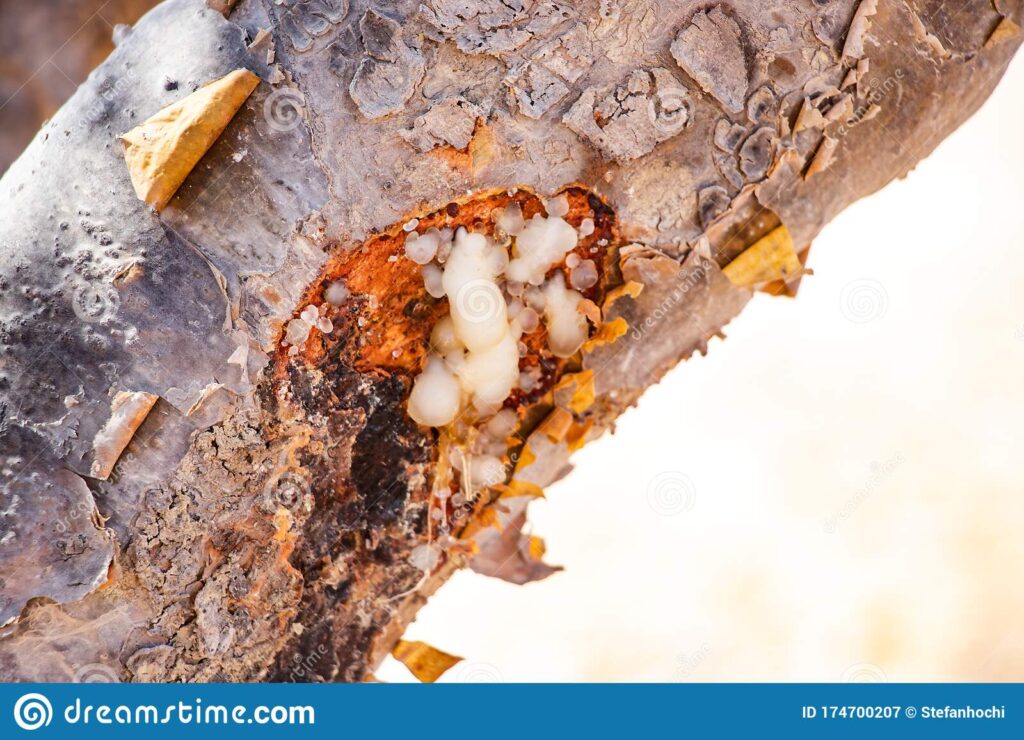
Why is Frankincense (Boswellia sacra) significant and given as a gift to Jesus in recognition of his Divinity? The reason is that in ancient times Frankincense was just as expensive as gold in terms of weight and is mentioned 22 times in the Bible.
Yet Frankincense is also rich in terms of its healing and therapeutic qualities. The essential oil comes from the dried and distilled resin of the Boswellia tree, grown in Somalia, Ethiopia, the Red Sea and Lebanon. It is extracted by tapping the bark, where the sticky resin exudes and forms ‘tears’ that harden. These ‘tears’ naturally protect the tree from infection and repairs damage and disease and we use it in the same way, to protect and repair our bodies and minds.
Traditionally Frankincense was used as incense in churches and for meditation. It is a balancing oil, calming and sedative, slowing the pace of, and deepening, the breath making it a comforting oil when stressed and anxious. However, it can also be energising as according to the Greek philosopher Pythagoras, Frankincense heightened his senses and awareness, enabling him to prophesise. Culpepper suggested it helped with depression and poor memory, helping strengthen the nervous system. It has a lemony, warm woody aroma which can sometimes be spicy and musky making Frankincense a dynamic oil – both relaxing and stimulating. When Frankincense is burned it produces phenol which is highly antiseptic, historically believed to banish evil spirits from sick rooms. Being rich in monoterpenes it helps clear mucus and catarrh making it expectorant so good for asthma, coughs, bronchitis and laryngitis – perfect for these winter months where our immune systems are low and susceptible.
Frankincense is also a lovely oil for the skin, particularly mature skin, balancing oily skin, it is anti-inflammatory, healing scars, wounds and sores – similar to how the resin ‘tears’ repair damage to wounds of the tree, we can use the oil to repair damage to human skin. It blends beautifully with Myrrh but also any citrus oil such as Bergamot, orange, lemon, and floral oils like Rose, Geranium, Lavender and Jasmine.
This is an oil gifted by kings given to a future king – if you believe in the Christmas story yet it’s healing, meditative power is far reaching both historically and cross culturally making it a magical oil producing perfect harmony, balance and calm.
Avoid in pregnancy, unsuitable for children and those who are taking immunosuppressant medication.
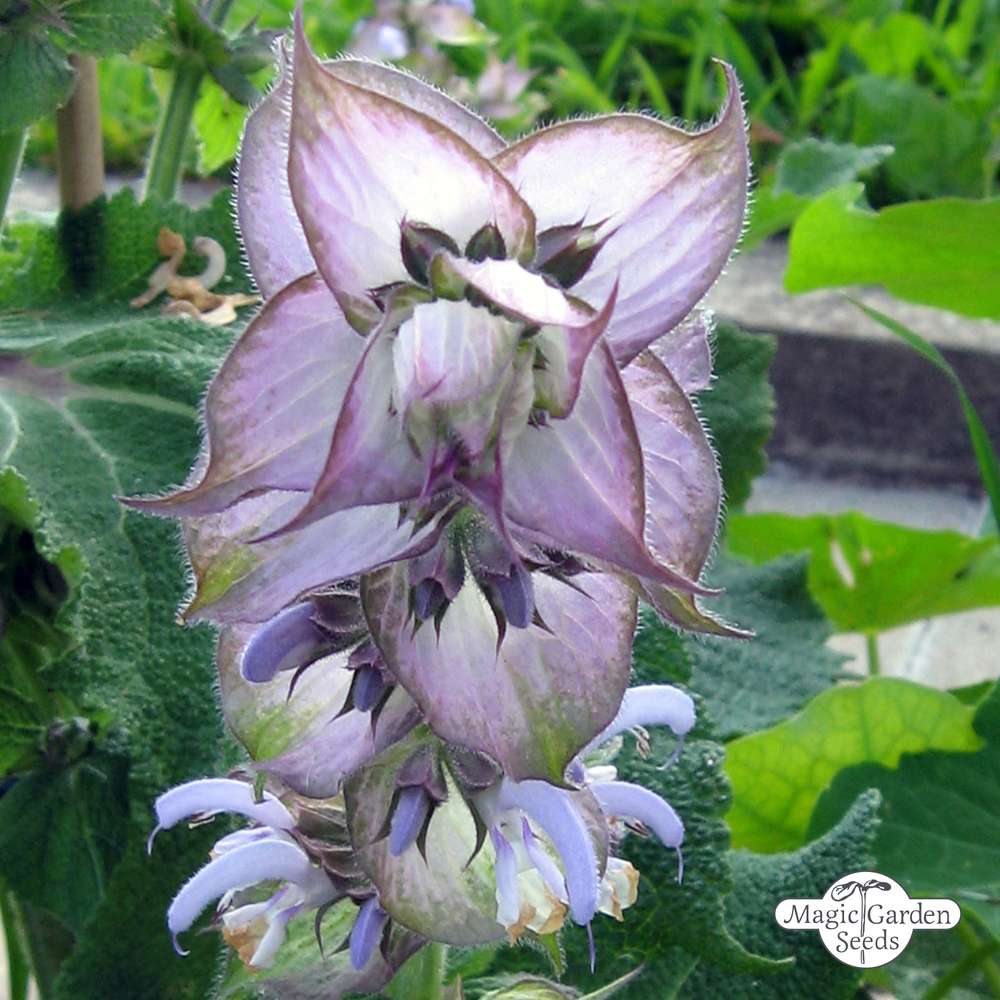
Now here is an oil when I smell it I think ‘THAT is aromatherapy’ because of it’s deep and profound aroma; it takes my breath away.
It is Clary sage (Salvia sclarea) which has a rich, intense, nutty, earthy scent and one whiff of it can help clear your mind of clutter.
It’s key chemical constituent is esters making it a relaxing, balancing oil. It is healing, uplifting, cheering so great on a wet, dark day like today but it is also calming so good for high blood pressure, headaches and migraines.
It is anti-inflammatory, soothing the skin and a cell regenerator but also helps relax muscles, reduces spasms and fatigue. Studies suggest it helps reduce bronchospasms and improves peak flow to an excellent choice for people who suffer from asthma.
It a gentle oil, a good choice for young and old, but can be sedative so use in small amounts. Also, care should be taken if used before drinking alcohol as it may increase the effects of drunkenness.
Use it in an evening bath, it blends beautifully with Lavender, any citrus oil, Juniper and Geranium (up to 8 drops using any combination in a warm bath) or in a rollerball, rubbing onto a pulse points to ward off tension and stress.
I cannot recommend this oil enough, for me it clarifies the mind, helps me see through a brain fog. Definitely an oil to savour.
Do not use in pregnancy, consult a doctor or qualified Aromatherapist if you have any concerns.
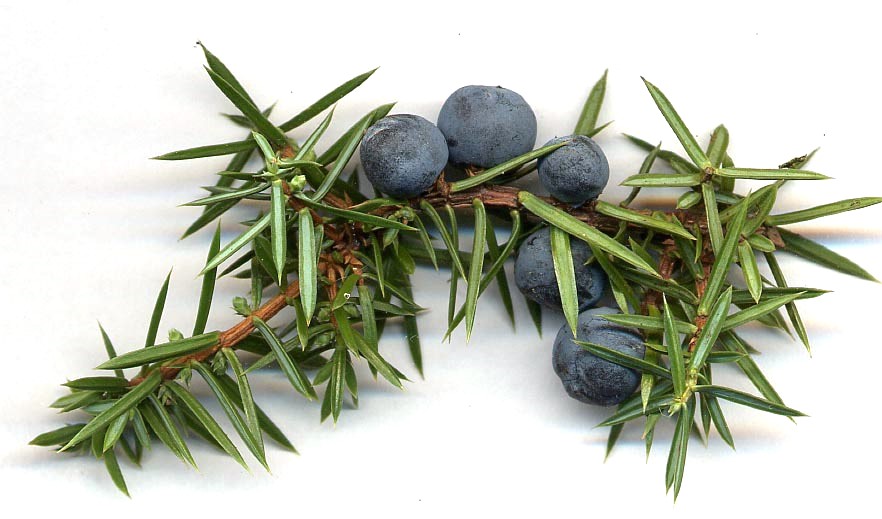
Today I’m writing about Juniper berry essential oil (Juniperus communis) grown naturally in the north, particularly Siberia, Canada and Scandinavia. Maybe this is why I think of Juniper as a winter plant, with it’s berries used in cooking at Christmas, or decorating wreaths, maybe it’s because it is a warming oil with it’s fresh, woody resinous aroma.
There is legend that the Juniper tree protected Mary, Joseph and infant Jesus from King Herod’s soldiers. It’s lovely to put into a burner or diffuser this time of year with Lavender, Rosemary, Ginger or Frankincense, or use in massage to warm the muscles.
Juniper detoxifies, it helps clean out the body and mind of excesses, of stress, exhaustion, tension. It is what we call an adaptogenic (see glossary) oil in that can relax and stimulate. For example, it is a diuretic so will help with fluid retention and cellulite. Studies with rats demonstrated weight suppression so could be used (with Grapefruit) to support weight loss. It is an abortifacient, it stimulates the uterus so should never be used in pregnancy however, it us useful for women and girls who experience PMS bloating, missed or irregular periods. It’s detoxifying properties are good for the skin too, unblocking pores, acne, dermatitis and eczema. It is antiseptic and antispasmodic due to it’s chemical make-up of alcohols and terpenes, extended practice demonstrates wound healing actions.
Traditionally, Juniper has been used in rituals, blessings, thought to drive away evil and protect our souls. However, more often than not these days, the only spirit it may be used for is gin!
A word of caution here, Juniper should not be used on those with kidney disease or on those who have suffered nephritis as prolonged use can irritate the kidney’s. Do not use in pregnancy. Make sure your oil is extracted from the berries (cheaper version are from the needles and wood), always buy oils displaying the Latin name.